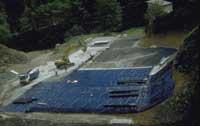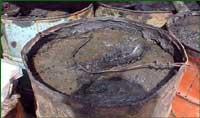Pesticides turned into poison for man
2005/03/01 Galarraga Aiestaran, Ana - Elhuyar Zientzia Iturria: Elhuyar aldizkaria

It is estimated that between 1 and 5 million pesticide poisoning occurs each year, leading to the deaths of thousands of farmers. Most poisoning occurs in developing countries, as they often do not have adequate health standards or can meet any standard. Finally, only a quarter of the total amount of pesticides used in the world is used in these territories, but almost all pesticide deaths, 99%, occur in them.
Most of those affected are farmers, as they often launch the product directly in the field without taking protective measures. The lack of knowledge, the lack of adequate equipment, the heavy and hot weather equipment of these places... are many reasons why you can work without protection. Aware of this, the most dangerous pesticides are prohibited in developing countries, but the fact that others are accepted does not mean that they do not cause any harm.
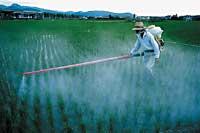
FAO is the Food and Agriculture Organization of the United Nations and believes that the governments of these countries have responsibility. For example, the Senegalese government has been investigating some cases of poisoning occurring in rural areas for years. The symptoms were fever, chest and belly pain, nausea and insomnia. In some cases, intoxication also caused death.
The result of the investigation was clear: the pesticide mixed with peanut seeds was responsible for the poisoning. Seeds were sold like this, and in developed countries they did not generate any problems, as they were sown with mechanical tools. However, in Senegal they were sown by hand, they did not use special suits or equipment, and in addition, to remove the peanut inside, some peasants died the seeds.
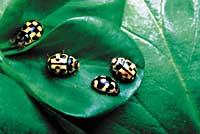
This example shows that farmers cannot always control the causes of poisoning. That is, farmers do not know that they are in danger and therefore, among other things, do not take action. Therefore, if governments do not assume this responsibility, farmers are left unprotected.
Harmful also to humans
Inhaled, ingested, ingested, inserted through the skin or mucous membranes... pesticides penetrate the body through various pathways, whether from the bug, weeds or Depending on the type of pesticide, are easier to introduce by one way or another, with a great difference in toxicity. Therefore, once poisoning occurs, the symptoms are very different depending on whether it is a pesticide or another.
In addition, it is not the same as acute intoxication, that is, taking a high dose at a time or being chronic, that is, taking small doses for a long time. Symptoms of acute poisoning are more evident, increasing the risk of mortality.
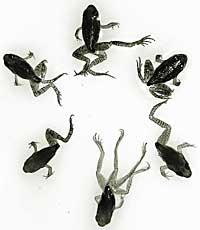
Some of the most prestigious pesticides, such as DDT, lindane or aldrin, are organochlorinated. As soon as they enter the body they pass into the blood and extend into the body. The first symptoms of acute intoxication are nausea, headache, and nervousness.
Then come strong tremors, alterations of breathing and heartbeat and loss of knowledge. In chronic intoxication the symptoms are very varied: liver, respiratory, eye, nervous, tumors...
Organochlorine pesticides cross the placenta at very low doses and concentrate on the fetus. After the baby's birth, this concentration increases as it continues to receive pesticides through breast milk.
Symptoms of poisoning
However, organophosphates are more dangerous to humans than organophosphates. Many are systemic. This means that when the plants are absorbed they remain in the sweat, so that when the insects sweat they enter the organism. The same thing happens to humans, so before eating it is enough to clean the vegetables or fruit well, but the poison reaches the human being. Otherwise, the farmer working in the field has a high risk of skin penetration and inhalation.

In acute intoxications, organophosphates affect the senses and then produce paralysis. Other symptoms may appear. In addition, the patient takes a long time to recover and normally there are consequences, it is not completely cured.
Carbamates act similar to organophosphates, but the main symptoms of acute intoxication are weakness, sweat, nausea, and blurred vision. Other types of pesticides, such as pyrethroids, cause itching and skin pain, along with tremor and paralysis.
Pesticides also act on the immune system and hormonal system, and researchers continue to study the influence of certain pesticides on humans. In fact, even though rigorous toxicity studies are conducted before marketing, unexpected effects may be seen later.
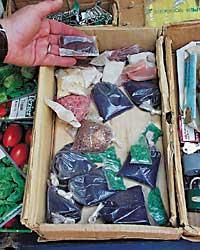
In developing countries, poisoning is even more dangerous for certain population groups, such as malnutrition, dehydration or disease, as well as for children. Because children weigh less than adults, they have higher concentrations of pesticides in the blood, so the effect is more intense than in adults. On the other hand, they have quite a few chances of intoxication when they play. In fact, these products are not always stored properly and are available to children. In addition, in the poorest places, children have to work in the fields and in the end have many risks of intoxication.
Obsolete pesticides, clock pump
In addition to problems arising from misuse, there is another source of problems, obsolete pesticides. They are traces of pesticides used in ancient times in pest control programs. They were not collected and left without taking any special measures. Now there are thousands of tons scattered here and here, and they are really dangerous. FAO has called them the watch bomb because they can cause serious damage at any time.
These watch pumps are located in developing countries. There is no concrete data, but in Ukraine, for example, it is estimated that 19,500 tons of chemicals have aged and 6,600 tons in Moldova. In Asia, for its part, there are about 6,000 tons, regardless of China, where they do not know how much there is, but they suspect that there can be many tons. In the Middle East and South America there are an estimated 10,000 tons and in Africa at least 50,000 tons.
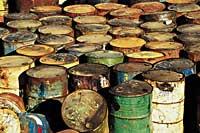
The governments of these territories have already begun to call for help from FAO to eliminate these waste. In fact, they are realizing the level of risk for both the environment and health. In addition, these pesticides are the most toxic of all: aldrin, DDT, dieldrine, heptachlor, organic phosphates...
Some are not so in bad condition, have remained quite well kept and are still available. At the other end are pesticides that have penetrated the soil by damaged drums. Unfortunately, those who are in this situation are more than those who have been well kept. Consequently, cases of poisoning are becoming normal.
FAO is implementing pesticide waste disposal programmes as well as teaching projects on the correct use of pesticides. In addition, in order to reduce the harmful effects on the health and environment of pesticides, there are two international agreements, one from Stockholm and one from Rotterdam. In any case, as always, money is needed in addition to words to carry out the writing, and that is precisely what FAO asks developed countries, a grant to channel projects.
Lindane, the most famous pesticide in Euskal HerriaLindane is a broad spectrum insecticide, very effective, that without knowing the damage it can cause, began to be used from the 50s. Much occurred in Bizkaia and for years there was an uncontrolled dumping of waste. No action had been taken against him until the 1980s. In 1995 the Basque Government presented a plan to combat lindane and finally chose to store waste in the security tanks. Warehouses located in Loiu and Barakaldo. In the first, 112.000 m 3 and in the other, 412.000 m 3 of land, land poisoned with lindane. |
Coca-cola: deadly sparksTest in India a cheap, effective and sparkling anti-bug pesticide: Coca-Cola. After soaking the cotton and pepper fields with Coca-Cola, the bugs disappear. It has also been tried with other cola drinks like Pepsi, but the results are better with Coca-Cola. The key is in the secret ingredient? However, scientists do not agree in terms of effectiveness. Some believe that the explanation is in Coca-Cola sugar: sugar attracts red ants that eat larvae of bugs, so there is no bug in the fields impregnated with Coca-Cola. Sugary water has already been used by farmers to prevent bug pests. Other researchers, however, do not see scientific bases or believe that it serves nothing. But to the farmer who after trying it has obtained good results, no matter the scientific basis! However, the splashing of fields with Coca-Cola is much cheaper than the use of conventional pesticides. If it is effective, better. |
Mirror effect

Many pesticides have an unpredictable effect during their environmental degradation. In fact, the molecules that form pesticides are chiral, that is, although they have the same formula, they have a different structure: one is the mirror image of the other.
These figures like the mirror are enantiomers, which although they have the same chemical formula as others, react differently with enzymes. Consequently, their durability is greater than that of the rest and therefore generate greater environmental impacts.

Gai honi buruzko eduki gehiago
Elhuyarrek garatutako teknologia




